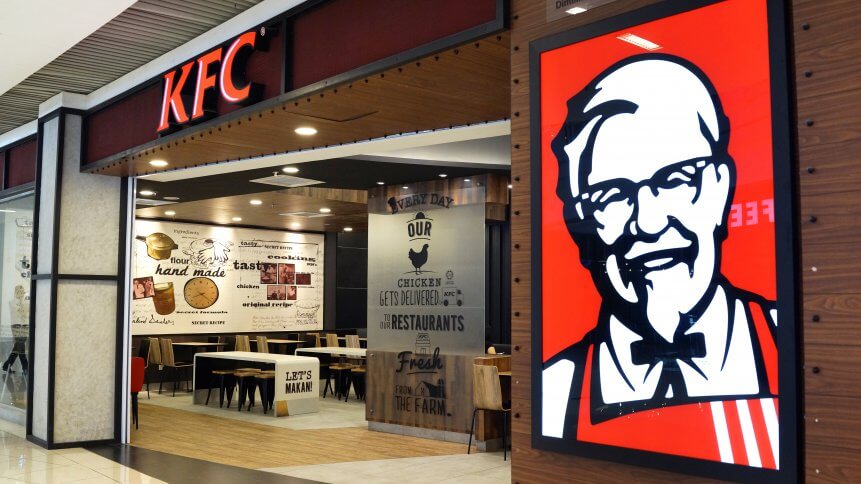Why ‘basic’ location marketing is crucial for physical retail

Today’s world of consumerism is dominated by e-commerce; it’s convenient, quick, generally cheaper, and rich for choice— this year, it’s estimated 25 percent of the world’s population will be shopping online and as shoppers increasingly go digital.
Of course, as more shoppers go online, a vacuum is being created on the street, and it’s no surprise that physical retailers are under pressure to make ends meet.
For the more tech-savvy, monied bricks-and-mortar retailers, innovation and experimentation are leading to the rise of ‘experiential’ retail, emphasizing the unique and tangible value of physical shopping.
While this may be creating a new level of ‘wow-factor’, never has it been more important for offline retailers to ensure they’re getting the basics right.
Location marketing
In this respect, offering a low-cost and effective solution, location marketing should be the first step to ensuring your business remains in the eye line of the increasingly digital shopper.
Not to be confused with location-based marketing— which pushes out an alert to a mobile device in close proximity— location marketing is the process of optimizing the online presence of a business’s physical locations.
It entails offline businesses leveraging the full range of means available to maintain their organic visibility online— the goal being to capture the intent of local customers when they are searching for goods and services in that area.
A numbers game
The effectiveness of simply leveraging free online directories and review sites, such as Google My Business, Facebook and TripAdvisor—— makes it accessible to every retailer, from small independent businesses to large international chains.
Fast-food giant KFC, for example, pooled its business listings into a central platform, ensuring its 1,000 UK outlets could be easily managed across 50,000 total listings.
As a result of these small, but widescale improvements, KFC saw a huge spike in customer actions, including a staggering 60 percent increase in clicks on the ‘directions’ information across all of its listings, leading to a 16 percent growth in revenue generated by local search.
Answer customers’ concerns
But just making sure your company is listed is not enough; online reviews make or break businesses today, and if they’re low, Google will take this into account, and down-rank your presence as a result.
“Responding quickly and individually to reviews – good and bad – that customers have left on social media and other websites strengthens a brand’s reputation,” said Paul O’Donoghue, Vice President, Solution Engineering at location marketing platform Uberall.
“Best practice review management also has a positive impact on organic search engine rankings, as trustworthiness— alongside keywords— is one of the two key factors influencing SEO [search engine optimization].”
In the hospitality sector, 77 percent of consumers check reviews for restaurants before booking a table, according to Uberall, but four in 10 people would still use a business if it had replied appropriately to the negative reviews.
YOU MIGHT LIKE

Google fake review ‘attack’ lands SMB blow
Local SEO
Being an offline business doesn’t mean brands shouldn’t have a website, either, and setting up an easy-to-use store finder and optimized local landing pages for individual stores. This is vital for scoring on a crucial location marketing aspect— local SEO.
“Local SEO is the process that businesses use to optimize their location’s online visibility for ‘near me’ searches by boosting the online presence of a business’ physical locations and by managing their online reviews,” said O’Donoghue.
“For example, when a customer undertakes a search for ‘fried chicken’ or ‘restaurant’ on their mobile, they are shown a handful of results of the outlets near to them. Accurate business listings, review management and optimized local landing pages all influence how these search results are ranked.”
Getting the basics right
Ultimately, all these (relatively light-touch) efforts for location marketing come together, ensuring a physical business has as great a chance as possible of catching consumers online and getting them into the store.
“High-street retailers, cinemas and restaurants all rely on in-store customers to survive,” O’Donoghue said.
“Whilst the rise of internet shopping, video streaming, and online food delivery have been seen to jeopardize these businesses, technology can actually be a help rather than a hindrance to driving customers in-store.
“Looking specifically at retail, whilst some brands are enhancing their in-store experience with AR and VR, many have overlooked the basic requirement to optimize their online business listings.”
Uberall found that among 85 percent of UK department stores (some of those most significantly impacted by e-commerce) Google My Business listings were inaccurate.
“Not only does this make it harder for consumers to find a business, leaving them frustrated and unlikely to make a return visit, but inconsistencies between the data held on various search engines and on websites negatively impacts overall search results, causing store listings to drop in search engine rankings and inadvertently making them invisible online,” said O’Donoghue.









